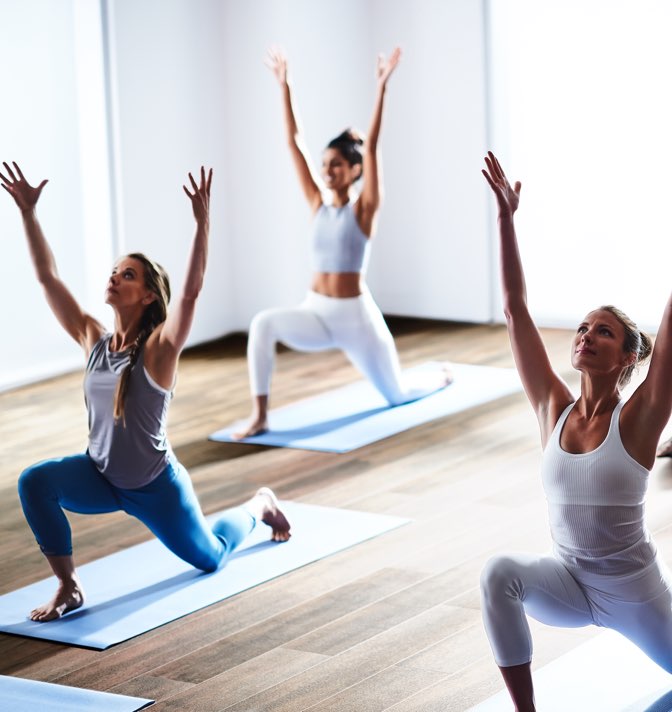Rocking is a dynamic and practical movement that few adults practice consistently or efficiently.
Spinal rocks boast myriad benefits: They support back health by improving spinal mobility and massaging the muscles around the spine; activate and strengthen the abdominal muscles; boost proprioception in the back-body; improve sense of balance and spatial reasoning; and build awareness of how tension and relaxation work together to generate power safely.
Rocking and rolling on the ground in a controlled environment may also improve your ability to manage an unexpected fall.
Yet most people don’t typically include spinal rocks in their fitness routines — and those who do try rocking might find the motion a bit awkward, uncomfortable, or too easy. If you’ve avoided the move, consider this a friendly invitation to give it another try.
Watch for common pitfalls, such as straightening the spine instead of rounding the back throughout the movement, using momentum instead of engaging the core, being too relaxed or too rigid, rocking too quickly without control, and getting thrown off by feeling off-balance or as though you’re about to fall.
The goal while rocking is to keep your back rounded and knees close to your chest, and to activate your abs. It’s a deceptively simple move, and one that can be progressed to increase difficulty.
The feeling of falling usually wears off with practice. And rocking is exactly that — a practice. It’s important not to take it too seriously; if you feel silly, try reframing your thoughts to “This is pretty fun!”
These tips can get you started with rocking — and rock your fitness world.
Instructions
- Sit on the floor and bend your knees, drawing them up to your chest. Allow your back to softly round, and engage your core. Lightly place your hands on your shins, or grasp the backs of your thighs.
- Round your spine, allow your weight to shift backward, and roll along the length of your spine, from hips to shoulders.
- Shift your weight forward to return to a seated position, spine still rounded.
- Repeat for one minute, using as little momentum or assistance from your hands as possible.
Additional Tips
- Keep your back rounded throughout the entire move. Avoid straightening your spine. If your lower back slaps against the ground, round your back more.
- Keep your knees bent and close to your chest.
- Avoid rolling back onto your neck.
- Engage your core to maintain a rounded back and generate power for the rocking motion.
- Do not strain, use momentum, or hold your breath. Inhale in the seated position, and exhale through the rocking motion.
Progress the Move
Diagonal Spinal Rock
- Sitting on the floor, bend your knees and draw them to your chest. With a rounded spine, allow your weight to shift backward, tracking the roll diagonally across your back to roll up onto one shoulder.
- While keeping your spine rounded, shift your weight forward to return to a seated position.
- You can alternate which side you roll to, switching between the right and left shoulders. Or you can repeat the roll to the same shoulder and move in a sort of semi-circle before switching directions.
- Repeat for one minute, using as little assistance or momentum from your hands as possible.
Spinal Rock to Half Kneeling
- Sitting on the floor, bend your knees and draw them to your chest. With a rounded spine, allow your weight to shift backward and roll across the length of your spine, from hips to shoulders.
- Still keeping your spine rounded, shift your weight forward to return to a seated position.
- As you approach the seated position, drop the knee of one leg and transition to a half-kneeling position. Pause here; deepen the bend of your front knee and/or reach forward with one or both arms to increase the stretch, if desired.
- Then transition back to a seated position and repeat the rocking motion backward and forward. Work to minimize and eliminate assistance from your hands.
- Repeat for one minute, inserting a half-kneeling stretch between rocks as desired.
Spinal Rock to Squat
- Sitting on the floor, bend your knees and draw them up to your chest. With a rounded spine, allow your weight to shift backward and roll across the length of your spine, from hips to shoulders.
- While keeping your spine rounded, shift your weight forward to return to a seated position.
- As you approach the seated position, transition into a deep squat. Hold the squat for a moment, then lower your hips back to the floor and repeat the rocking motion backward and forward. Work to minimize and eliminate assistance from your hands.
- Repeat for one minute, inserting a squat between rocks as desired.
Spinal Rock to Stand
- Sitting on the floor, bend your knees and draw them to your chest. With a rounded spine, allow your weight to shift backward and roll across the length of your spine, from hips to shoulders.
- While keeping your spine rounded, shift your weight forward to return to a seated position.
- As you approach the seated position, transition into a deep squat and powerfully come to a standing position.
- Reverse the motion by squatting down, then lowering your hips back to the floor to repeat the rocking motion backward and forward. Work to minimize and eliminate assistance from your hands.
- Repeat for one minute, standing up between the rocks as desired.
This article originally appeared as “The Spinal Rock” in the November 2022 issue of Experience Life.






This Post Has 0 Comments